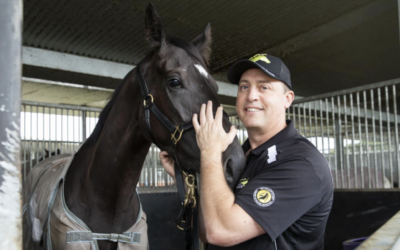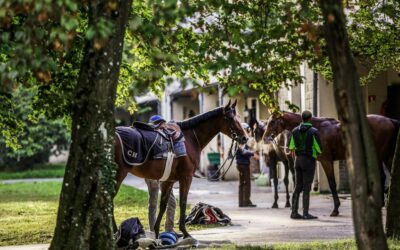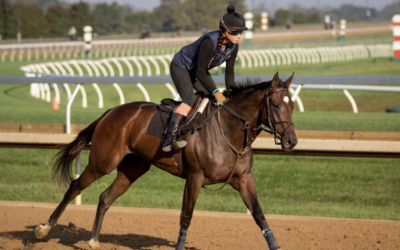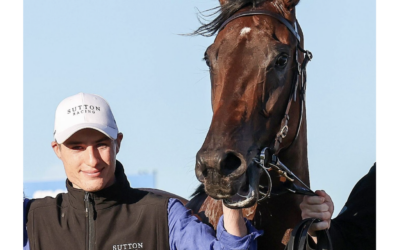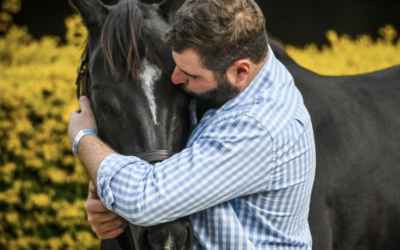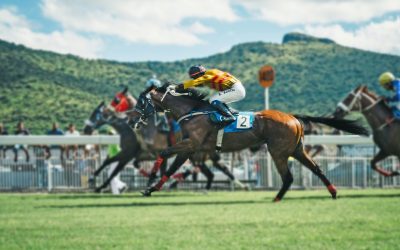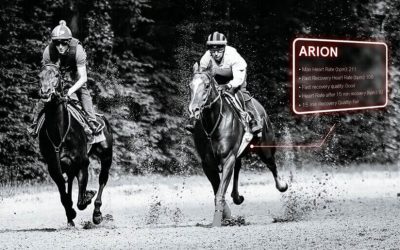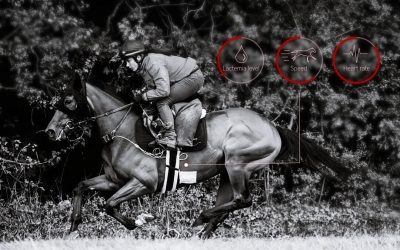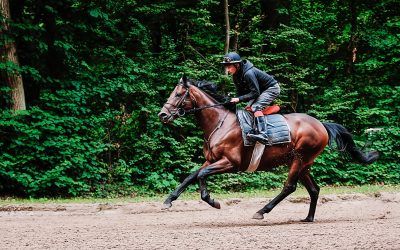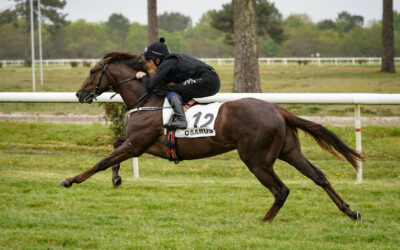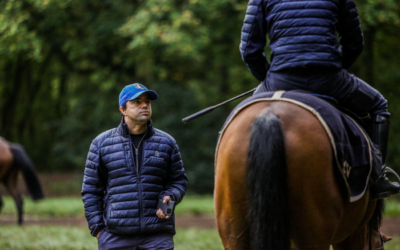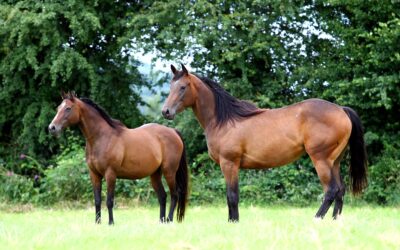EXPLORE OUR BLOG
Here you will find a lot of information to better understand performance and health measurements as well as tips about racehorse training and well-being.
LATEST ARTICLES
Preparing Isle Of Jura with data – From Newmarket: George Scott’s Equimetre experience
World Horse Racing is an international digital media company specialising in racehorses.
In partnership with them, we have produced a video of George Scott and his use of the Equimetre, particularly in preparation of Isle of Jura.
In Brisbane: Tony Gollan’s Equimetre experience.
From his journey with data collection to the benefits of using EQUIMETRE, Tony shares how data-driven decisions have enhanced his training outcomes.
Psychology and welfare of racehorses: the impact of stress on performance
It is now a few years since the question of the equine welfare, which can be defined, according to the IFCE (The French Horse and Riding Institute), as “the good mental and physical health of the animal”, is developing and taking more and more importance into the mentalities. Some studies have been carried out and initiatives have been taken with the objective to sensibilize about the subject. The IFCE has notably led a survey in favor of animal welfare, relating different subjects as the evolution of the practices in favor of the
Lexington trainer: Kara Lin Toye’s Equimetre experience.
The Keeneland meet is always a good opportunity to meet and greet our Equimetre users based in Kentucky, including Kara Lin Toye.
She told us about her experience with Equimetre and how she integrates it into her daily work with horses.
From Flemington to Ballarat: Dom Sutton’s Equimetre experience
Our representatives from Arioneo in Australia had the opportunity to speak with Dom Sutton at his stables in Ballarat about his experience with and use of Equimetre. As young startup stable, transitioning from Flemington to Ballarat, data has been a strong asset in the team organization.
The Equimetre experience by Will Clarken & Richard Adam
We had the chance to interview Will Clarken, a trainer based in Morphettville since 2011, along with Richard Adam, responsible for Sales, Finance & Data Analysis at Clarken Racing.
BROWSE AMONG OUR CATEGORIES

Equine Physiology

Testimonials

Racehorse training
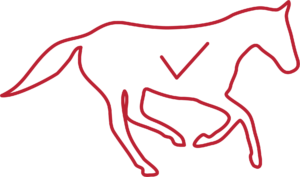
Young racehorses
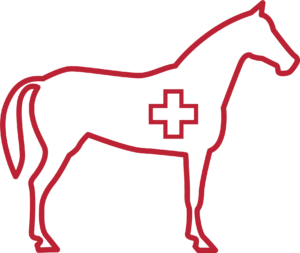
Health & Science
Standardbreds
EQUINE PHYSIOLOGY
6 key elements to analyze heart rate
Discover 6 key elements to analyze your racehorses’ heart rate data.
ECG of the athletic horse
The electrocardiogram (known as ECG) is a veterinary tool that records the electrical activity of the heart. It allows to investigate and monitor the heart function of the horse by displaying the electrical activity of the heart.
Finding the right balance between under-training and overtraining
The horse’s team encounter a major issue in the training of racehorses: how to find the balance between overtraining and under-training?
EQUIMETRE, a scientifically validated tool
After more than a year of work, we are proud to be able to bring scientifically validated, medically accurate technology to our veterinary clients.
Standardised test of effort in horses
The standardised test of effort is a tool allowing to assess the way in which the horse performs during training and holds his effort.
The standardised effort test for racehorses in practice
The standardized test of effort must reflect the reality of the effort of a race (e.g. an acceleration over 400/600m) without reaching its intensity.
RACEHORSE TRAINING MONITORING
Trevor Andrews’s Equimetre experience
We were lucky to interview thoroughbred trainer Trevor Andrews regarding his utilization of EQUIMETRE.
Xavier and Louis Blanchet’s Equimetre experience
We had the chance to talk with Xavier and Louis Blanchet, trainers in Chantilly. They shared with us their experience with EQUIMETRE, and how they integrated it into their daily work with horses.
The role of data in racehorse pre-training
Racehorse pre-training increases the likelihood of success on the track. To maximize the performance of young athletes, racehorse trainers understand the necessity of developing muscle strength, boosting general fitness, and providing proper ground work.
Christopher Head’s EQUIMETRE experience
On the occasion of a photo shoot at Christopher Head’s stables in Chantilly, we chatted about his use of EQUIMETRE.
John Ortiz’s Equimetre experience
We had the chance to talk with John Ortiz, thoroughbred trainers in the United States. He shared with us his experience with EQUIMETRE, and how he integrated it into their daily work with horses.
Breaks in racehorses: how to proceed?
The break in a racehorse is a period of rest. With performance being the key to success, the importance of a proper break for horses may arise. In this article, we will explore in detail the concept of the ‘break’ in racehorses and explain why it is a crucial element in maximising their performance.
EQUINE HEALTH & SCIENCE
Giordana Girini, integrating the Advanced program into her vision of a future data analyst
Giordana, an equine science and osteopathy enthusiast, tells us about her journey, her experience with the Advanced program, and how she integrates data into her daily life.
How Jarrad Cook, data analyst at Kris Lees Racing improved his data knowledge with the Advanced program
Jarrad Cook, data analyst at Kris Lees Racing in Australia, shares his experience of the Advanced program and how he uses the Equimetre in his daily work.
Laura Fitzharris: how does the Advanced program integrate her veterinary practice?
Laura tells us how the Advanced program has enriched her veterinary practice and enabled her to integrate data into the monitoring of athlete horses.
YOUNG RACEHORSES MONITORING
No Results Found
The page you requested could not be found. Try refining your search, or use the navigation above to locate the post.
STANDARDBREDS TRAINING
No Results Found
The page you requested could not be found. Try refining your search, or use the navigation above to locate the post.
TESTIMONIALS
How Jarrad Cook, data analyst at Kris Lees Racing improved his data knowledge with the Advanced program
Jarrad Cook, data analyst at Kris Lees Racing in Australia, shares his experience of the Advanced program and how he uses the Equimetre in his daily work.
Laura Fitzharris: how does the Advanced program integrate her veterinary practice?
Laura tells us how the Advanced program has enriched her veterinary practice and enabled her to integrate data into the monitoring of athlete horses.
Equine technology: Better understand your horses with Arioneo data, Darryl Ward’s EQUIMETRE experience
In this interview, find out how Deagon trainer Darryl Ward has integrated equine technology into his training with EQUIMETRE.


